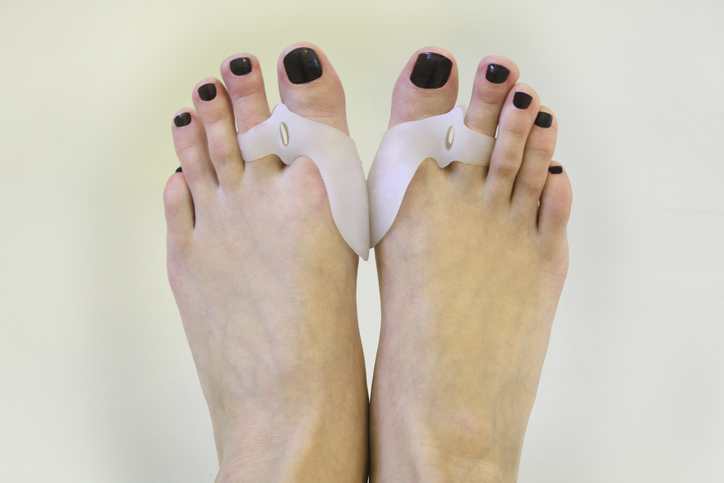When bunions first appear on your feet, they might seem like nothing more than a minor cosmetic concern. However, with time, these small bulges can start making everyday activities like walking and wearing shoes a painful challenge.
If you are struggling with bunions, you’ve two choices – traditional surgical treatments or minimally invasive surgery.
While both approaches aim to deliver comfort and restore mobility, they differ significantly in effectiveness and long-term results.
In this post, we’ll explore the difference between traditional and minimally invasive surgery to help you make an informed choice.
How Do I Know It’s Time to Treat Bunions?
The intermittent pain that you experience while walking or running is enough to remind you that you need treatment. What might start as an occasional discomfort can gradually worsen, and it can affect your ability to perform everyday activities.
If the pain has become more frequent or intense, or if it’s starting to interfere with your choice of footwear and mobility, it’s likely time to take action. You must pay attention to these warning signs:
- Persistent Pain: You experience pain despite taking over-the-counter remedies to manage bunion pain or changing your everyday footwear.
- Redness, Pain, and Swelling: There is visible swelling, redness, and inflammation around the big toe joint.
- Foot Deformity: The shape of your feet has changed, and the big toe significantly leans towards the little toe.
Are you experiencing any of these symptoms? Book an appointment with Alliance Orthopedics and seek effective treatment for bunion deformity. Make comfort a part of your life with our minimally invasive bunion or bony bump treatment.
💡An Interesting Fact: Did you know women are more likely to develop bunions than men? (source)
Traditional vs. Minimally Invasive Surgery: What’s Better?
When it comes to choosing between traditional and minimally invasive bunion surgery, there are several factors that you need to consider. Below, we have compared both treatments along with their benefits and demerits.
Traditional Bunion Surgery
Often referred to as open surgery, this procedure involves making a large incision to access the bunion. During the treatment, a surgeon realigns the bones in the foot and may use screws, plates, or pins to stabilize the correction.
This method has been a standard approach for many years, but it is now being replaced by minimally invasive methods.
Benefits
- Effective for Severe Cases: Traditional bunion surgery might be ideal for addressing severe bunions and complex foot disorders that may not be suitable for other techniques.
- Comprehensive Correction: The open approach allows surgeons to perform extensive corrections and address multiple issues within the foot.
Drawbacks
- Longer Recovery Time: Patients typically face a longer recovery period, often taking several weeks to months before resuming normal activities. This extended downtime can significantly impact your daily life and work.
- Increased Pain and Discomfort: The larger incision often results in greater post-operative pain and discomfort, requiring stronger pain management strategies.
- More Scarring: The big incisions can leave more noticeable scars, which can be a concern for those who prioritize cosmetic outcomes.
- Higher Risk of Complications: With a more invasive approach, there is a greater risk of complications such as infections, delayed healing, and complications related to the use of hardware.
Minimally Invasive Bunion Surgery
Minimally invasive bunion surgery uses smaller incisions and specialized instruments to correct the bunion. This outpatient procedure involves making 3-5 mm pin hole incisions in the skin and utilizing advanced tools to realign the bones and tissues without causing extensive trauma to surrounding areas.
Benefits
- No Need For Cast or Crutches: Patients walk out of the procedure wearing a boot.
- Faster Recovery: Patients often experience a much quicker recovery time, with many able to return to their daily routines within weeks. This rapid healing is particularly advantageous for those with busy lifestyles or those needing a quicker return to normalcy.
- Reduced Pain and Discomfort: Smaller incisions mean less disruption to tissues, leading to reduced post-operative pain and discomfort. It often translates to a lower need for pain medication and a more manageable recovery process.
- Minimal Scarring: The tiny incisions result in little to no scarring which increases mobilization and aesthetic outcomes.
- Low Risk of Complications: The less invasive nature of the procedure reduces the risk of complications such as infections and wound healing issues.
Drawbacks
- Might Not Be Suitable for All Cases: In some cases, especially if the patient has severe bunion deformities or complex foot issues, minimally invasive surgery might not be the right option. However, it’s important to consult a doctor for a suitable treatment.
Comparing the Two Treatments
Minimally invasive bunion treatment is a preferred choice among patients, considering faster recovery, less pain, and minimal scarring. You don’t have to spend weeks in the hospital, as the outpatient procedures let you get back to your regular life within a few days.
Besides relieving the symptoms, minimally invasive procedures also correct the alignment of your feet, making them look aesthetically pleasing in high heels or shoes without the risk of scarring.
If your bunions are preventing you from doing what you love, consult with Alliance Orthopedics and get an effective treatment.
Can I Treat Bunions Without a Surgery?

Non-surgical methods such as bunion pads, shoe inserts, and over-the-counter medicines to relieve pain can be beneficial initially but will not stop the development of bunions nor cure them. Once the foot issue reaches a severe stage, non-surgical treatments typically fail to address the underlying hallux valgus deformity effectively.
In such cases, surgery becomes necessary to correct the bunion permanently and restore foot function by improving the position of the first metatarsal bone.
Post-surgery, traditional methods like wearing comfortable shoes and toe spacers can help improve the hallux valgus angle and reduce the risk of bunions from recurring.
Get Relief from Bunions With Alliance Orthopedics
If the foot pain and discomfort from bunions have started impacting your daily life, it’s time to seek a lasting solution. At Alliance Orthopedics, we specialize in minimally invasive bunion surgery in New Jersey, a cutting-edge approach to correct bunions effectively with reduced pain and a quicker recovery.
Our experienced team understands how debilitating bunions can be, and we are committed to providing personalized care tailored to your specific needs. With our minimally invasive techniques, you can expect less postoperative pain, minimal scarring, and a faster return to your normal activities.
Don’t let bunion pain and other foot problems impact your life any longer. Reach out to Alliance Orthopedics today to schedule your consultation and take the first step toward pain-free feet!

